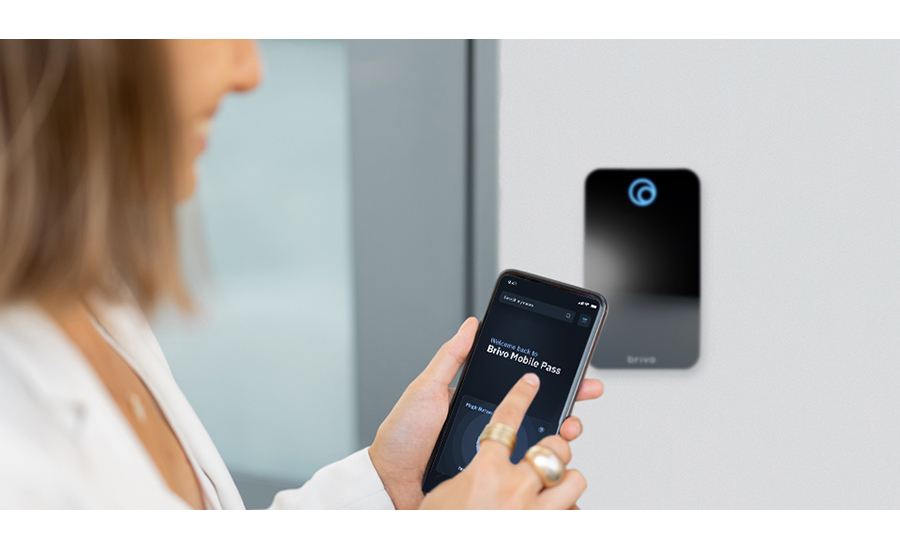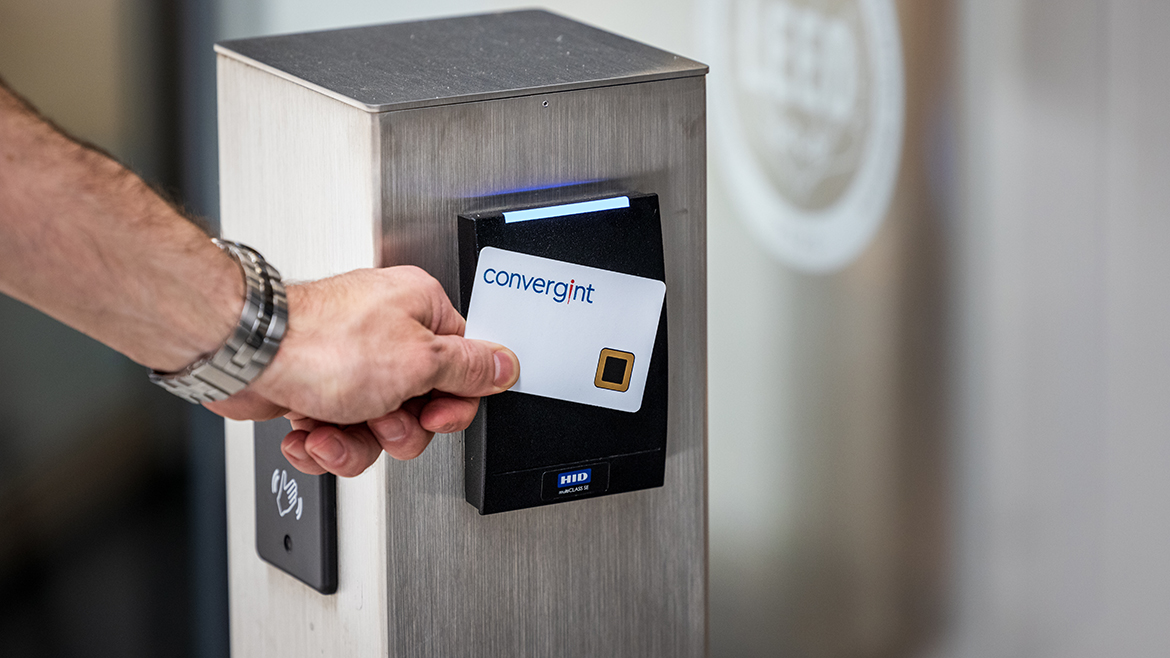Enterprise access control looks a lot different now than it did three years ago. Supply chain disruptions and increased costs have made it difficult for integrators to meet their customers’ needs, and manufacturers are facing the same issues with their suppliers.
The good news? Technological advancements and outside-of-the-box thinking are leading the way to a new future for access control.
Supply Chain Woes
When asked about bottlenecks for large access control projects, integrators unanimously lament supply chain issues.
Jeff Sweeney, general manager of A+ Technology and Security Solutions, Bay Shore, N.Y., puts it simply: “Availability of Mercury panels, power supplies and credentials are the largest issue with starting new projects in a timely way and keeping existing customers from failure or running out of credentials at the last minute.”
What’s behind the shortage of these crucial components? Shortage of microchips, for one thing. “There are essentially three major sectors of microprocessor chips users in North America: consumer electronics, automotive and ‘other;’ access control technology falls within the ‘other’ sector,” explains Tony Varco, vice president, global strategy and marketing at Convergint, Schaumburg, Ill. “Consumer electronics and automotive sectors are consistently prioritized over access control when it comes to gaining access to microprocessor chip supply.”
Component shortages set off a domino effect. “Next comes hefty price increases and rationing of critical components,” says Bill Hobbs, global vice president of sales at 3xLOGIC, Fishers, Ind. “In one case, we have seen a component that was $6 pre-COVID soar to over $300, if available at all. This has driven not only manufacturer price increases, but shortages of completed assemblies as well. Some manufacturers have been unable or unwilling to deal with these insane cost increases and have instead elected to wait for components to return within a range of a standard costs. Obviously, this adds to the assembled product shortages across the entire industry.”

Tom Augenbaugh Jr., senior installation technician at Doyle Security, works on a customer installation. One way Doyle has dealt with the supply chain issue is to ask the manufacturer to provide them with a more expensive in-stock replacement for the same price as the device they don’t have available. // IMAGE COURTESY OF DOYLE SECURITY
Innovation & Communication
Integrators and manufacturers have developed creative ways to tackle product shortages.
“One way we have stayed ahead of the curve is by pressuring the manufacturer to provide us with an in-stock replacement that might have more technology inside of it — a more expensive option — for the same price as the device they don’t have available,” says Jeremy Daumen, regional general manager of Doyle Security, Rochester, N.Y. “It is a nice bonus to let the customer know you’ve solved the problem and they’ll end up better off with the increased functionality.”
Steve Van Till, founder and CEO of Brivo, Bethesda, Md., offers advice to fellow manufacturers on how to manage supplier delays: “The key to managing them is twofold: Be in constant contact with suppliers to assess changing conditions and adjust timeframes with customers as needed; and be creative with solutions. This means continuing to innovate to address changes in the marketplace.”
Mark Allen, general manager, physical access systems at Identiv, Santa Ana, Calif., explains how the company has navigated these issues. “Resourcefulness has been the main thing: not accepting answers like, ‘That will be a 42-week lead time,’ and finding alternatives. We’ve used some of our capital reserves to buy ahead of some of the long lead times. Unfortunately, we also had to pass some of the cost onto the customer with a price increase and surcharge on the most affected products.”
Remote Work Presents New Opportunities
Other pandemic-era phenomena are migration of mobile access and cloud based-solutions.
“More customers are trying to move to the cloud and away from on-premise systems, removing the impact of having to maintain servers and systems in-house and ensure systems are all up-to-date,” says Jim DeStefano, senior vice president of Unlimited Technology, Chester Springs, Pa. “Cloud-based providers generally take care of the servers and system updates automatically without intervention from the integrator or the customer.”
As organizations have shifted from large office spaces to work-from-home or hybrid work models, their security needs have changed.
Kim Rahfaldt, director of marketing at AMAG Technology, Hawthorne, Calif., observes, “In this work environment, providing and managing credentials is becoming more challenging, which is why we’ve seen companies moving towards using mobile devices for credential management. Permissions and administration can be done quickly and remotely, removing the time, inconvenience, and expense of using cards.”
Remote and hybrid work models depend on the cloud as well. “Cloud-based systems give companies greater flexibility and efficiency, which is precisely what they need in an ever-changing dynamic work environment,” Van Till notes. “The cloud is the foundation on which hybrid work models can thrive due to its ability to collect valuable data and inform make-or-break business decisions. It’s also essential for integration into a broader ecosystem, particularly workplace management systems, which are native to the cloud and a core part of successful hybrid working models.

Freedom Cloud is a cloud-based Access Control as a Service (ACaaS) subscription-based offering allowing users to control, manage and maintain their physical access control systems via always-up-to-date web administration. // IMAGE COURTESY OF IDENTIV
The Strength of Integration
Integration into broader ecosystems is becoming more common as customers seek to maximize their security investment. “We’re seeing demand for more dynamic reporting than what was previously typical,” reports Jay Slaughterbeck, CEO of Strategic Security Solutions, Raleigh, N.C. “Now, customers don’t just want to know who came in a door and when; they want more generalized information. For example, how many unique visitors within a specified time frame, how long were they there, were they assigned a desk, etc. The data being produced by the access control system is being used more for other things than it was before.”
Varco concurs. “These customers are looking to improve their overall operations and realize a return on investment by leveraging their security infrastructure.”
Hobbs adds that customers can’t fully utilize security data without strong integration. “The value of silos of data housed in stand-alone security systems that are not communicating with one another quickly depreciates as the lack of integration adds challenges to understanding what is really happening in the secured environment.”

Brivo Mobile Pass allows users to open doors across locations using a smartphone and Brivo’s mobile access control solution. // IMAGE COURTESY OF BRIVO
What Lies Ahead
As Identiv’s Allen puts it, “These are some exciting times for access control.” From moving to the cloud, offering mobile solutions, building fully integrated solutions, and more, there are still plenty of ways access control integrators can provide value to their customers. “Don’t just keep delivering the solutions you have; look around on a regular basis and see what other solutions are available,” Allen advises. “Customers do want the best solutions out there and there are lots of them — try some new ones.”
Hobbs provides the macro view: “Our many challenges are global in nature and will persist for some time. We do not see a resolution for many of the supply chain roadblocks until well into 2023, and while we expect some component costs will come back down, many of those increases are here to stay.”
Strong relationships between manufacturers and integrators is critical to the success of the industry. “Communication, patience, and innovation will serve you well as we all continue to navigate this mess,” Hobbs encourages. “Other than that, this is an unprecedented situation and no one I’ve met yet has a magic wand.”






